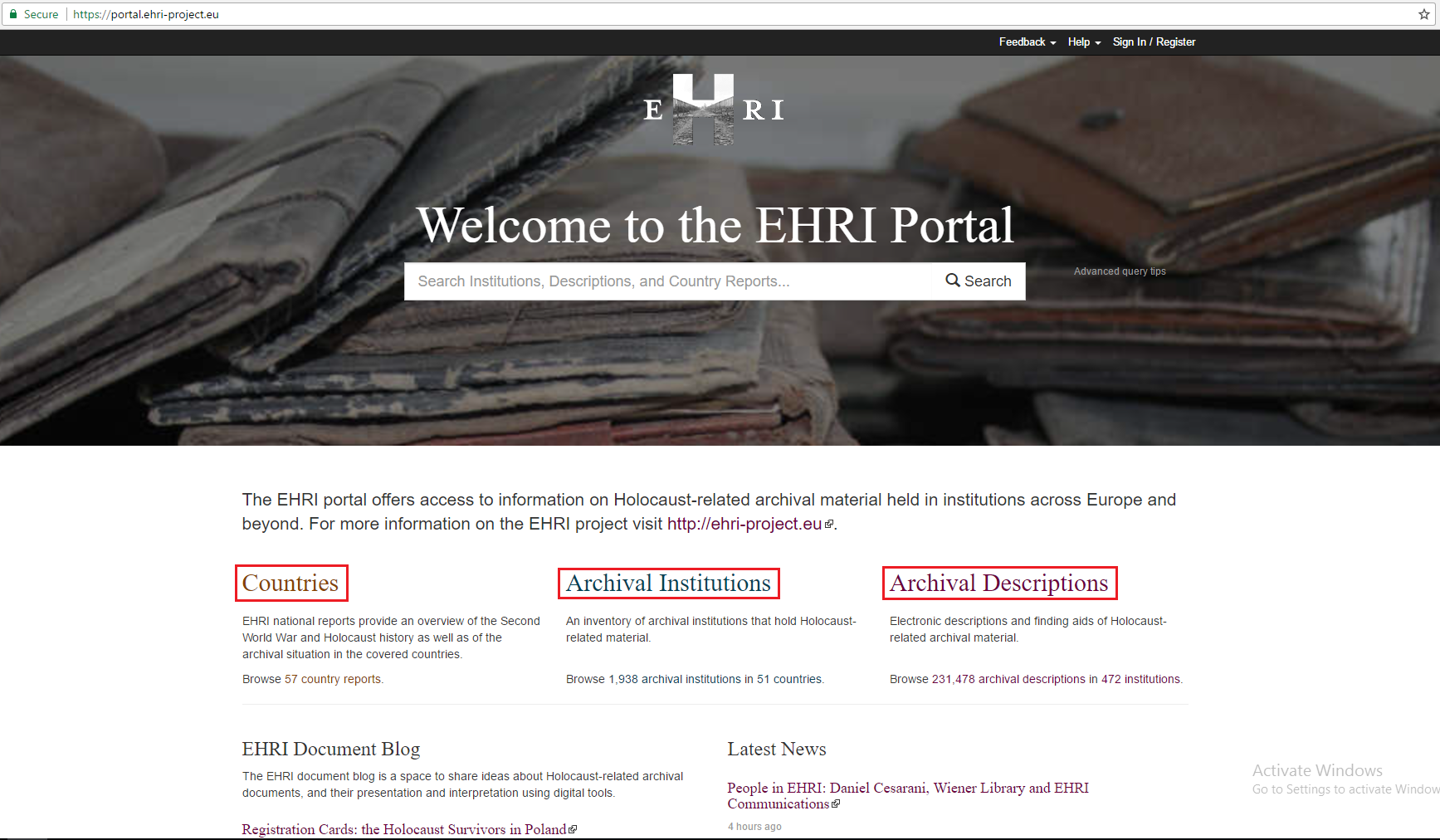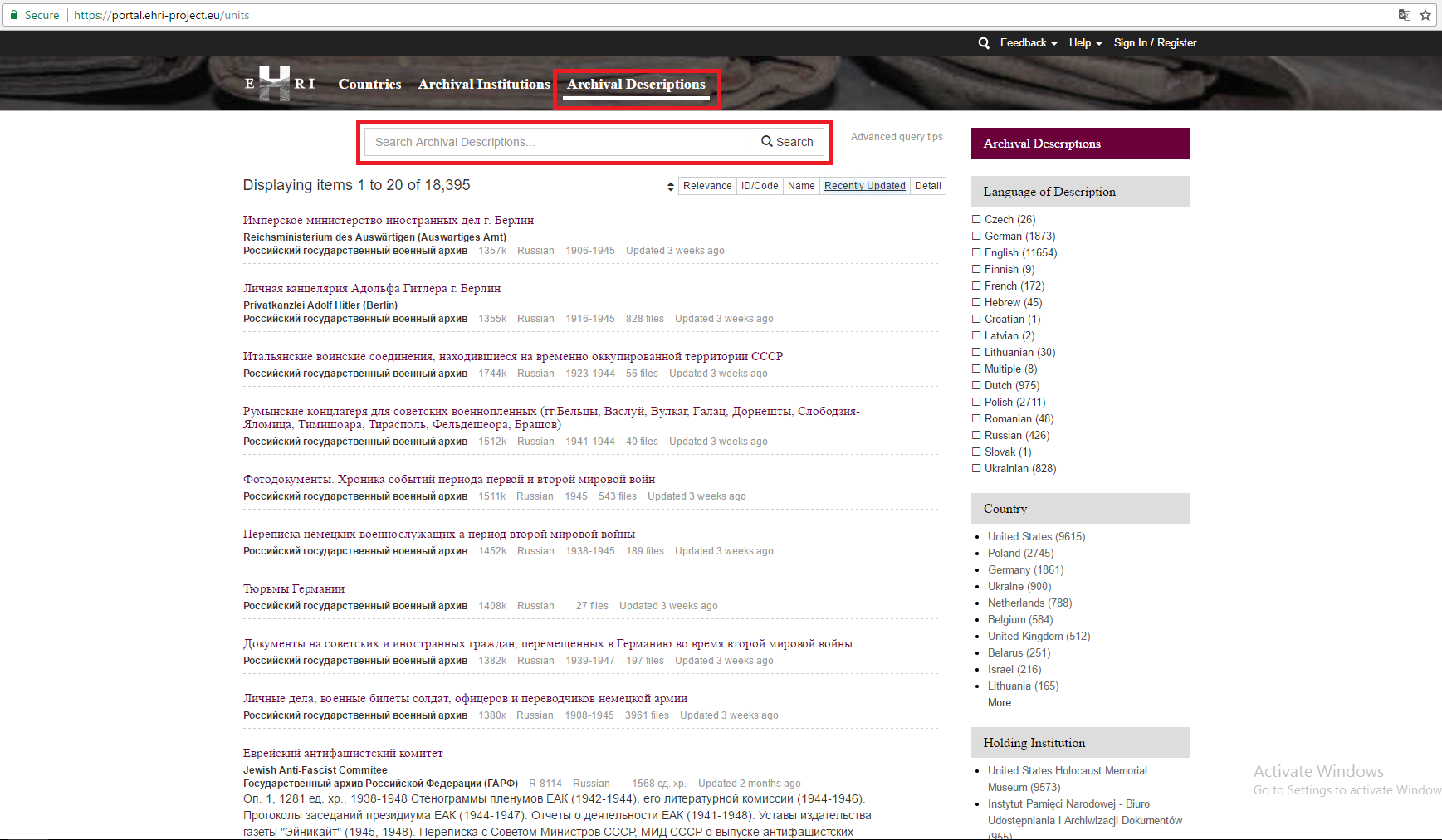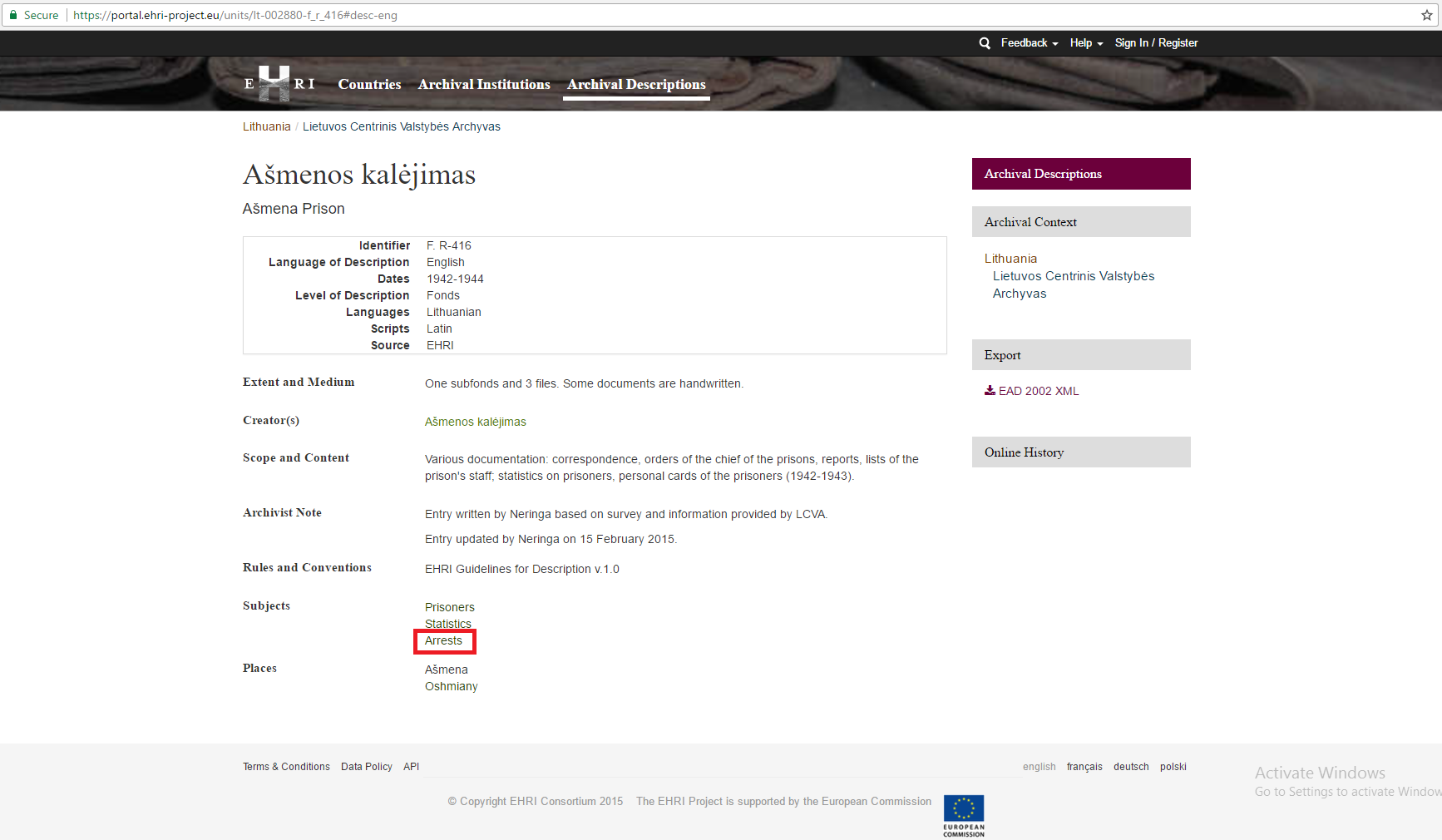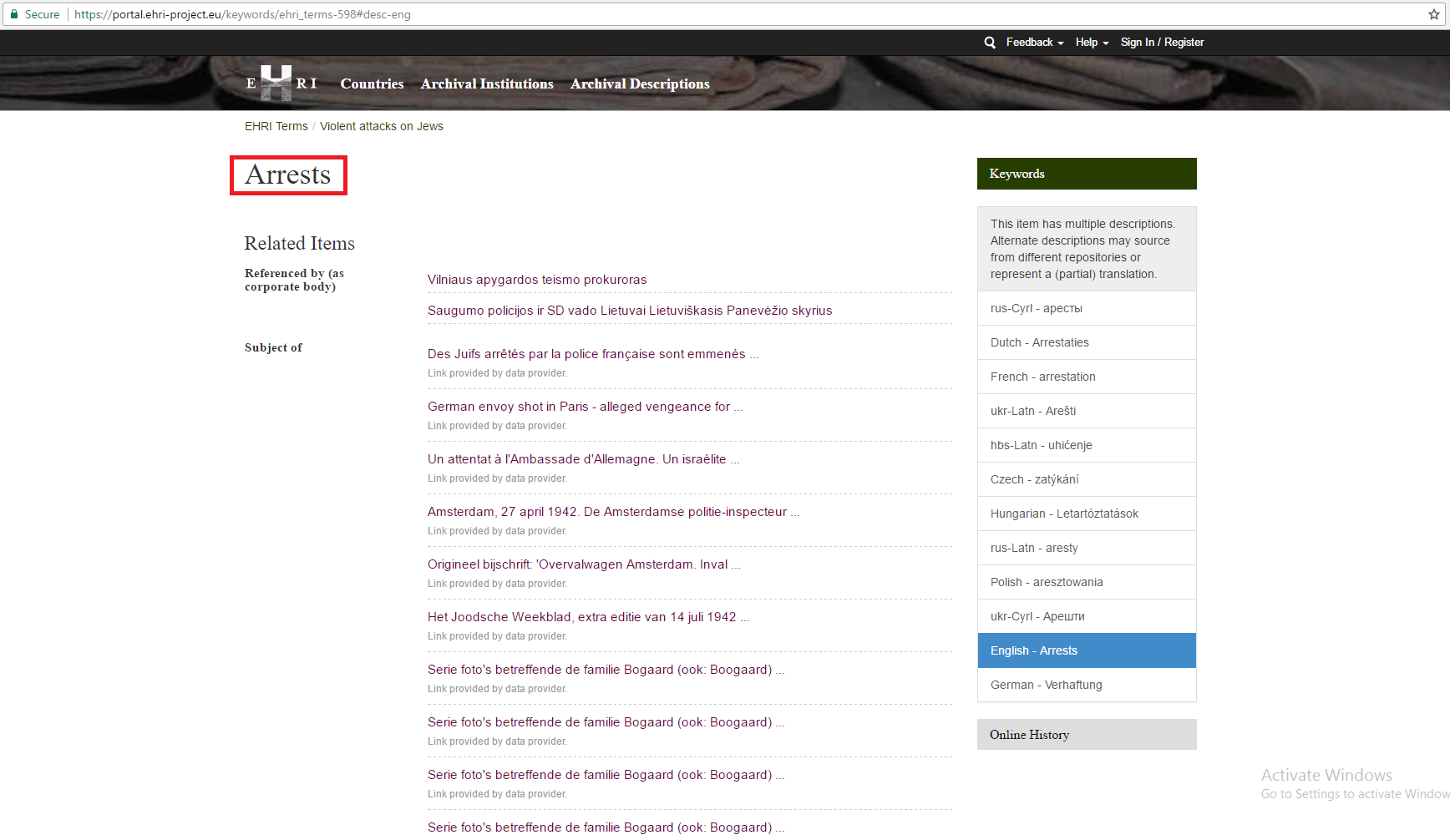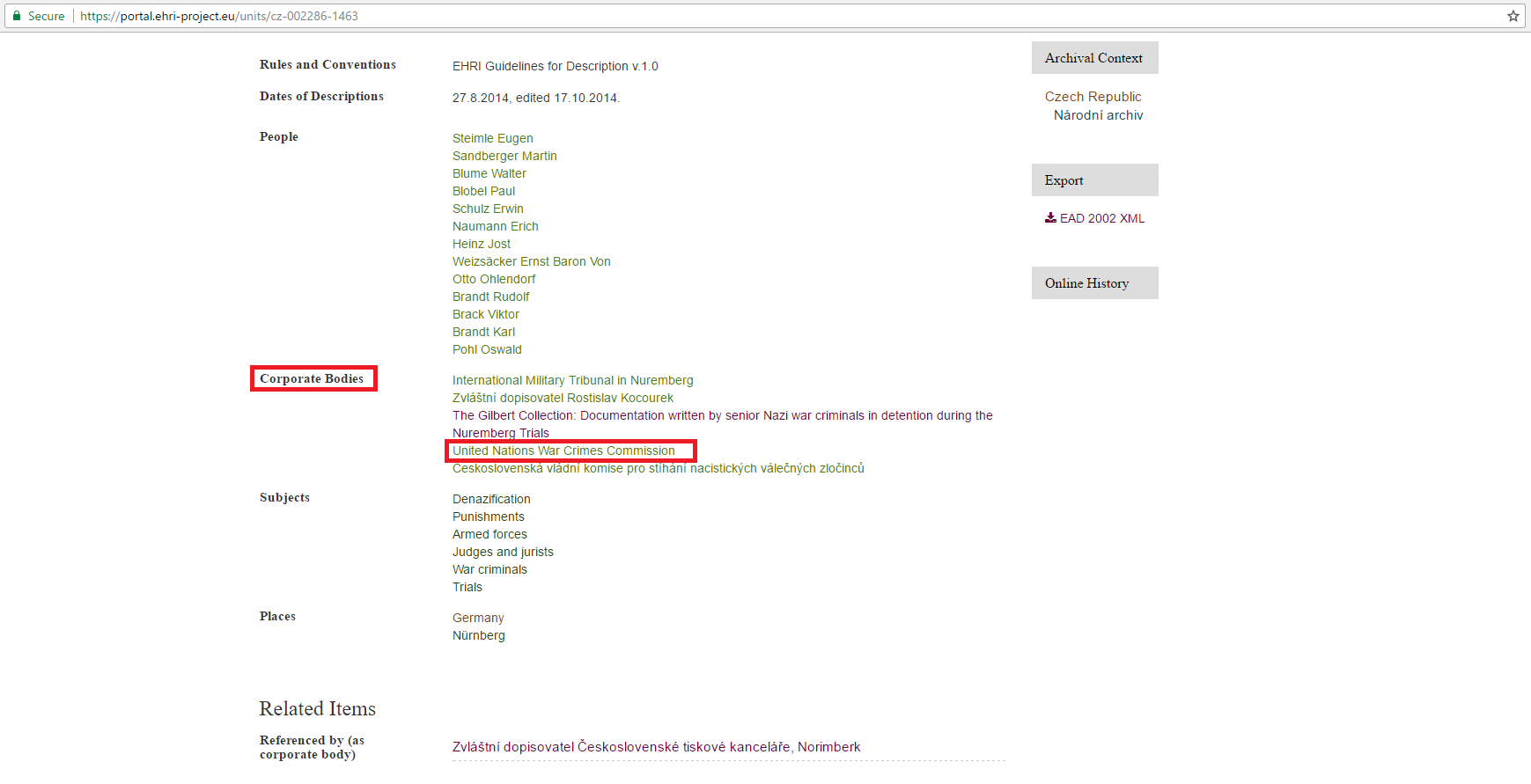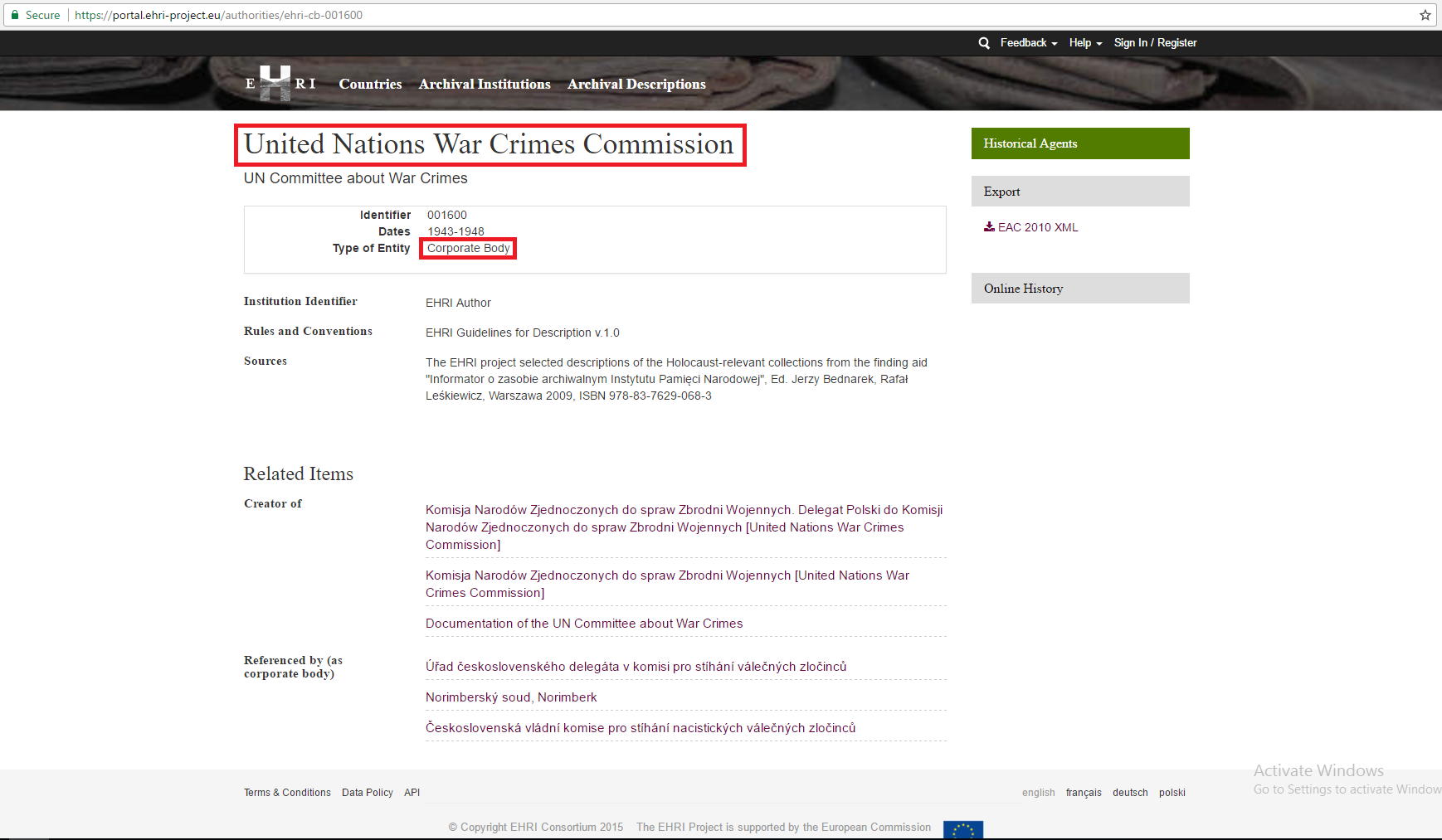Welcome to the EHRI Portal Manual. You are probably eager to get started and begin searching the Portal for information about Holocaust-related archival sources and institutions. This manual will guide you through this process in Chapters D, E, F, G; however, to make best use of the Portal’s search and browse capabilities, it is helpful if you first familiarise yourself with certain details. You might want to learn what kind of information the Portal holds (covered in this Chapter), the way this information is structured (Chapter B), and, finally, the methods that were used to assemble the information (Chapter C).
Main Content
The Portal contains large amounts of rich information on three basic entities: countries, archival institutions and archival holdings (also called archival descriptions in the Portal).
Countries: EHRI aims to provide information on all those countries where significant Holocaust collections can be found today. By February 2017, 57 such countries have been identified, but further countries might be added in the future.
For each country the Portal provides a concise description of its Second World War and Holocaust history and a summary of its archival situation today. For those countries where EHRI has been active in identifying archival institutions and holdings, we further provide details of the research we have undertaken. These research reports give a good indication of the extent to which the Portal’s information about archival institutions and holdings is complete for any given country. More information about the general structure and content of the country reports is available in the Introduction to the EHRI Country Reports on Holocaust History and Archives (https://ehri-project.eu/country-reports).
Archival institutions: These are descriptions of institutions – archives, libraries, memorial institutions, etc. - which hold Holocaust-related archival collections. For some institutions, the descriptions are very detailed, while for others the Portal currently only provides basic information such as its name, address and website. Please note that even though EHRI has invested considerable resources into identifying institutions, and as of February 2017 has written more than 1,900 relevant descriptions, our coverage is by no means complete and we are continuously adding more institutions to the Portal.
Archival descriptions: The descriptions of some archival holdings are available for selected institutions. The Portal hosts more than 230,000 descriptions of archival units located in 471 archival institutions. Even more than the descriptions of countries or archival institutions, this is very much work-in-progress and more archival descriptions for an increasing number of holdings are continuously added.
Controlled Vocabularies
In addition to descriptions of countries, archival institutions and archival holdings, the Portal also hosts a number of controlled vocabularies. Descriptions of archival holdings are linked to terms taken from these vocabularies. Such linkages make search and retrieval of information more powerful. . Currently, the following vocabularies are available:
Terms: a multilingual, structured thesaurus of Holocaust-related subject keywords. By February 2017 this thesaurus consisted of over 870 terms with each term translated into 12 languages. For a list of all terms that are currently available see https://portal.ehri-project.eu/keywords?set=EHRI+Terms
Camps: The names of Nazi camps and sub-camps. As of February 2017, we have identified 1,975 such camps. This vocabulary provides unified place access points in archival descriptions. See https://portal.ehri-project.eu/keywords?set=EHRI+Camps
Ghettos: Names of Jewish Ghettos in English and Hebrew. As of February 2017, we have identified 1,109 ghettos. See https://portal.ehri-project.eu/keywords?set=EHRI+Ghettos
Administrative districts: Names of administrative districts in German administered territories. As of February 2017, we have identified 261 districts in 7 territories. See https://portal.ehri-project.eu/keywords?set=Administrative+Districts
Corporate bodies: Names and further information on Holocaust-relevant corporate bodies (for instance, organisations and families). As of February 2017, we have described 3,229 corporate bodies. See https://portal.ehri-project.eu/authorities?set=Ehri+Corporate+Bodies
Persons: Names and further biographical information on important personalities. As of February 2017, we have described 610 such individuals. This vocabulary is used to identify collection creators and provides unified person access points in archival descriptions. See https://portal.ehri-project.eu/authorities?set=Ehri+Personalities
